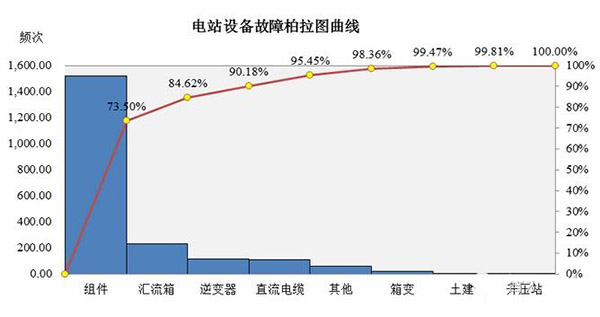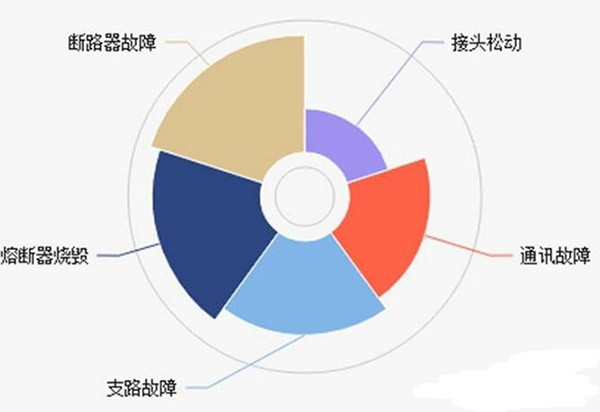Photovoltaic power plants have been built for half a year and have been operating and maintaining for 25 years. As an important asset of hundreds of millions of dollars, the operation and maintenance of photovoltaic power plant investment is very important! How to increase the profit of the power station through efficient operation and maintenance?
First, the work before transferring the project to operation and maintenance
The information transferred from the general contractor (or constructor) of the PV power station to the operation and maintenance team shall be complete, including:
1) Preliminary data: pre-work approval documents, such as land approval, EIA approval, access approval, etc.;
2) Technical data: design drawings, equipment technical data, project acceptance documents;
3) Contracts and financial documents: bidding documents, purchase contracts for equipment and materials, various types of expenses, etc.;
For the acquired power station, when carrying out the final adjustment, it is first necessary to verify the legality, completeness and validity of the above-mentioned documents, relevant procedures and contracts involved, etc. Second, the overall quality of the power station needs to be tested and evaluated to ensure The need for rectification work is completed before the transfer of the power station.
Second, the preparation of power station operation and maintenance
The photovoltaic power stations that the operation and maintenance team took over must first develop a reasonable division of labor and management and a scientific management system based on their own power stations and staffing conditions, including:
1) production operation system, 2) safety management system, 3) emergency fire control system, 4) equipment operation procedures, etc.;
1, production and operation system
Responsible for routine inspections to make clear provisions. Regular inspections and patrols under special circumstances are indispensable. They can keep abreast of the operational status of the power station, discover existing or potential problems, and ensure normal power generation.
2, safety management system
Safety management runs through the entire operation and maintenance process, including the rational use of safety tools and safety practices, etc. to ensure personal safety and equipment safety. Due to the limited experience of on-site operation skills and fault diagnosis and analysis, skilled personnel are required to train them. For high-voltage electrical parts, a high-voltage operation network license is also required before they can be certified.
Third, the fault analysis of power station operation and maintenance
In the operation of photovoltaic power plants, due to factors such as the equipment itself, the weather, and other force majeure, faults may occur on both the DC and AC sides.
After one year of continuous tracking of a western ground power station, it was found that the total frequency of failures on the DC side (components, combiner boxes, inverters, and DC cables) accounted for about 90% of the total fault ratio, while the AC side (AC cable, box) Faults such as transformers, civil works and booster stations are relatively small.
A number of power plants that have been in normal operation for more than 2 years in a certain region of the western region are monitored. The annual loss caused by faults is about 0.18% which is the smallest, and the largest proportion is about 0.85%. The frequency of major equipment failures of photovoltaic power plants is The proportions are as shown in the figure below.
(Note: Due to the large individual differences in PV power plants, this case data does not have a wide representative meaning).

Figure 1 Plato Curves of Failures of Various Equipments on Photovoltaic Plants
Inverters, booster stations, and convergent cables, although the frequency of failures is small, but in the event of a failure, a great impact on the amount of power generation, the failure can be seen from the background real-time monitoring status can be maintained in a timely manner.
DC-side array strings, due to the large number of strings, have a high frequency of failures (73.5% of the total), and therefore have a great impact on the amount of power generated; however, their failures are not easily discovered if the operation and maintenance personnel can discover them in time. , can significantly increase the power generation capacity of the power station.
1, the main component failure
During the operation and maintenance process, the main problems of the components include: loose components, hot spot failure, glass breakage, junction box diode failure, etc.
The main reason:
1) The components are loose when the construction is not tightly clamped;
2) It is related to the quality of the components themselves.
2, the main failure of the junction box
The main faults and causes of the combiner box are shown in the following table:
1) The fuse is burned, mainly because the fuse quality or the rated current of the selected fuse is too small
2) Circuit breaker heating, tripping
3) Communication abnormality (including damage of communication box acquisition module)
4) Terminals are heated, mainly due to loose terminals and excessive resistance)
5) branch faults, such as ground faults, overcurrents, DC arcing, etc.
The frequency of occurrence of the above five problems is illustrated in Figure 2.

Figure 2 Common faults of the combiner box
3, the main fault of the inverter
1) The module (main board) is faulty due to a bad exhaust system and a high cabinet temperature.
2) Module self-heating causes module overheating
3) Fan damage problem
4) The fuse is burned
5) Smoke detector malfunction
6) Breaker tripping
7) Startup abnormality
8) Ground fault, etc.
4, the main fault of the DC cable
1) Ground fault
2) Damage caused by construction or rolling insulation of vehicles
3) Cable head breakdown problem
4) The design of the design institute is inconsistent with the actual design, and the wire diameter is small, causing the cable to heat up.
5) Short circuit
If the cable is buried shallowly during construction, in particular, the soil of the ground power station is gravel. After the operation and maintenance vehicles pass through, it is easy to roll over to the cable to cause damage, and the operation and maintenance must be discovered and handled in time during the inspection.
5, other issues
The foundation of the power station was subsidence, or the land was tilted due to rain erosion and collapsed, and some did not do flood protection. Outdoor oil tank changes mainly include oil leakage, low oil level, and circuit breaker failure.
6, power station failure summary
During the operation of the power station, the above-mentioned common faults may recur during the future operation, or expose new problems. What we need to do is analyze and classify the faults regularly through the above similar methods. The first time after the fault occurs. Processing, strengthen the patrol inspection of the frequently-prone areas, try to minimize the failure losses, on the other hand, the fault discovery, analysis, and resolution process is also one of the ways to improve their capabilities for the operation and maintenance personnel.
Fourth, power plant intelligent operation and maintenance system
With the increasing scale of photovoltaic power plants held by enterprises, traditional power plant management methods have become less applicable. Power station operation and maintenance systems tailored for power station operation and maintenance have emerged as a result, which not only reduces the workload of operation and maintenance personnel. , And the system is also very powerful, able to complete:
Data collection and analysis (meteorological data, power generation statistics, PR analysis, equipment operation)
Cluster fault location, alarm center, defect management, automated report management and other functions.
Among them, data collection and analysis are the core of the operation and maintenance system, and the data collected and analyzed include:
Confluence box data (string current, voltage)
Inverter data (real-time voltage, power generation, real-time power, etc.)
Real-time data of key points such as box change, high-pressure side, and grid point.
The operation and maintenance system is based on real-time data, making the operation and maintenance of the power station more efficient and a very effective technical means.
However, it must be emphasized that even with the operation and maintenance system, the daily inspection work still needs to continue!
Some problems are blind spots for the operation and maintenance system, and it is difficult to find, such as the temperature of the device connection terminals, there is currently no effective real-time monitoring means. If the continuous high temperature, it will bring security risks, operation and maintenance personnel generally through the infrared thermal imager The equipment terminals in the photovoltaic area and booster station are scanned by infrared to find the abnormal temperature points and eliminate the hidden dangers.
Protein covers a percentage of 55 to 60 in Corn Gluten Meal, other contents are amino acid, various vitamin and micro-element.It's a kind of good feed purified additive for poultry and live stocks growing and disease-resistant. Furthermore, it can also be used to extract natural pigment and various amino acid.usually called corn_coloring element and widely used in industries. With high protein, they are widely used in feeds industry, especialin shrimp breed aquatics , shrimps are grown well with this supplement.It's a kind of good feed purified additive for poultry and livestocks growing and disease-resistant. Furthermore,it can also be used to extract natural pigment and various amino acid.
Corn Gluten Meal,High Protein Corn Gluten,Corn Gluten Meal 60,Cgm 60
MIDI FEED BIOTECH LIMITED , https://www.chinabromine.com